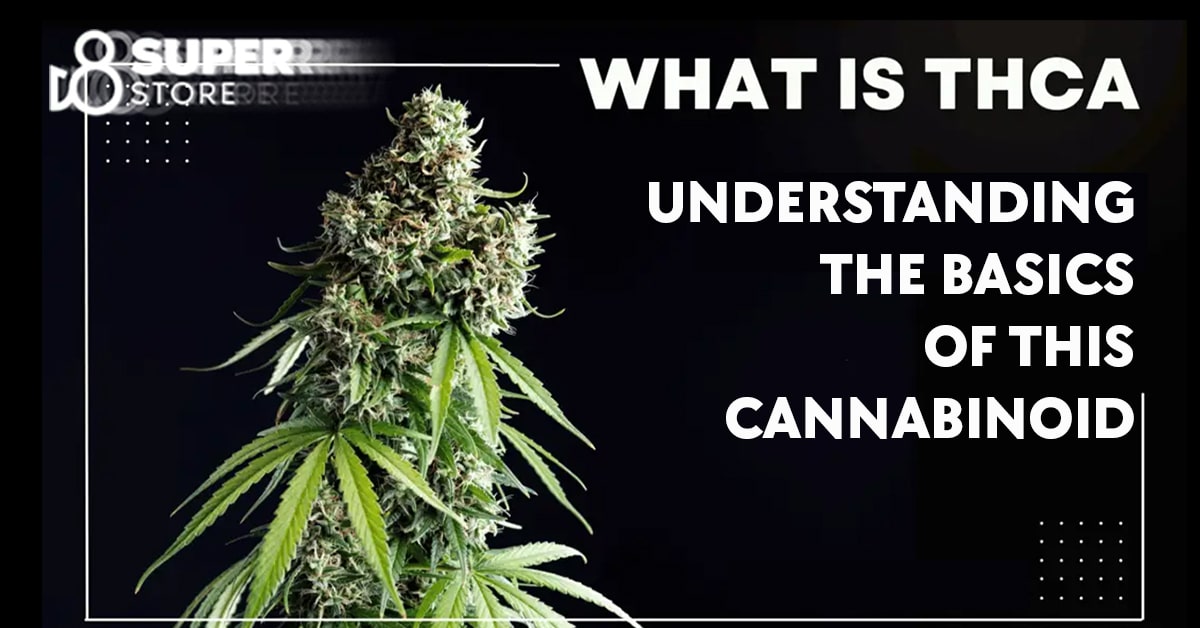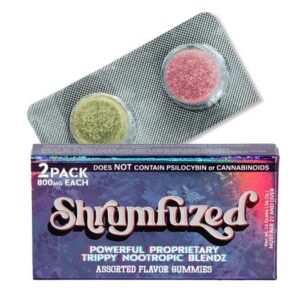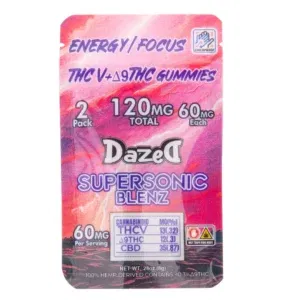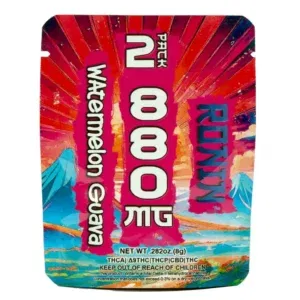What is THCa: Unveiling the Precursor to THC in Cannabis Science
Tetrahydrocannabinolic acid (THCa) is a non-psychoactive cannabinoid mainly present in the cannabis plant. In its raw form, such as fresh leaves and buds, THCa is abundant. This compound acts as the acidic precursor to delta-9-tetrahydrocannabinol (THC), the well-known psychoactive component. When the plant dries or heat is applied, THCa undergoes decarboxylation, converting into THC and resulting in the psychoactive effects commonly associated with cannabis.
Understanding the difference between THCa and THC is crucial for your grasp of cannabis’ properties and effects. Among the cannabinoids, which are diverse chemical compounds that act upon the body’s endocannabinoid system, THCa is just beginning to be understood. Research has suggested potential therapeutic applications for THCa, from reducing adiposity and preventing metabolic disease in cases of diet-induced obesity to potentially playing a role in the treatment of arthritis, due to its role as a partial and selective PPARγ modulator with lower adipogenic activity.
Despite its non-psychoactive nature, THCa might hold its own health benefits. It’s important for you to note that consuming THCa in its natural state, such as through juicing raw cannabis leaves or consuming raw cannabis edibles, does not produce the high associated with THC. Current research is exploring how THCa may contribute to the medicinal and nutritional value of cannabis, providing a different perspective on the plant’s use beyond its psychoactive properties.
Chemical Properties of THCa
When you examine tetrahydrocannabinolic acid (THCa), you’re looking at a non-psychoactive precursor to THC, which undergoes a transformative process upon exposure to heat, resulting in changes to its chemical structure and properties.
Molecular Structure
THCa, or Δ9-tetrahydrocannabinolic acid, is a cannabinoid with a unique molecular structure characterized by a 22-carbon framework typical of terpenophenolic compounds. The molecular formula for THCa is C22H30O4, indicating that it contains 22 carbon atoms, 30 hydrogen atoms, and 4 oxygen atoms. This structure is responsible for the distinctive properties of THCa, differentiating it from its decarboxylated counterpart, THC.
Decarboxylation Process
Decarboxylation is a chemical reaction that removes a carboxyl group from a molecule, releasing carbon dioxide (CO2). In the case of THCa, decarboxylation typically occurs through the application of heat. When you heat THCa, a CO2 molecule is released, transforming THCa into THC, the psychoactive compound often associated with cannabis.
Conversion to THC
The conversion of THCa to THC is not only a result of smoking or vaping. It can also occur slowly when the compound is stored over time, particularly in conditions of elevated temperatures. The efficiency of the conversion process depends on several factors, such as the temperature and duration of heat exposure. Even without direct heat, THCa can convert to THC through a process called non-enzymatic decarboxylation.
By understanding these aspects of THCa, you gain insights into why this compound has both its unique non-psychoactive properties in its raw form and how it’s related to the psychoactivity of cannabis after being subjected to heat.
Cannabis Plant and Compounds
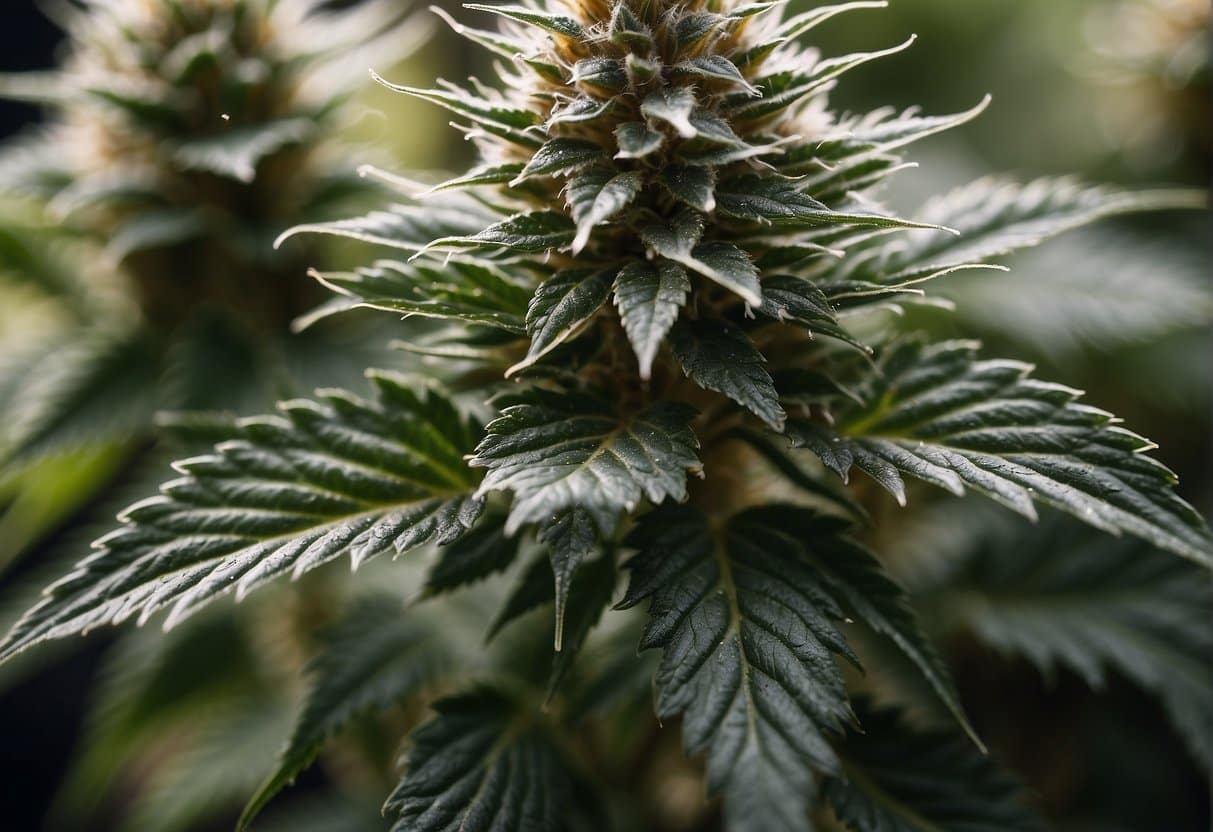
In exploring the Cannabis sativa plant, you’ll find a complex array of compounds known as cannabinoids. Two key points to keep in your mind are the presence of THCa in raw cannabis and the variety of non-psychoactive cannabinoids, like CBD.
Cannabinoids in Cannabis
Your understanding of the Cannabis sativa plant must include its rich profile of cannabinoids, which are the chemical constituents unique to the plant. Among the over 100 different cannabinoids present, tetrahydrocannabinolic acid (THCa) and cannabidiolic acid (CBDA) are the most abundant in raw cannabis varieties.
- THCa: Precursor to the more commonly known THC, found in high concentrations in drug-type cannabis.
- CBDA: Dominant in fiber-type (hemp) cannabis, it is the acidic form of CBD.
THCa in Raw Cannabis
THCa is pivotal to the cannabis plant’s profile, representing the non-psychoactive, acidic form of THC. Before heat application or decarboxylation, it’s THCa that you find in cannabis. It’s been identified as crucial in determining the plant’s psychoactivity level post-consumption.
- Raw cannabis is rich in THCa, which does not produce psychoactive effects until converted into THC through heat.
Non-Psychoactive Cannabinoids
In contrast to THC, there exists a plethora of non-psychoactive cannabinoids in the cannabis plant, with CBD being the most recognized. These are important for their therapeutic potential without the ‘high’ typically associated with cannabis.
- CBD and CBDA: Non-psychoactive compounds with increasing interest for their potential health benefits.
- Cannabigerolic acid (CBGA): Often referred to as the “mother of cannabinoids,” it serves as a precursor to both THCa and CBDA.
Biological Effects and Receptors
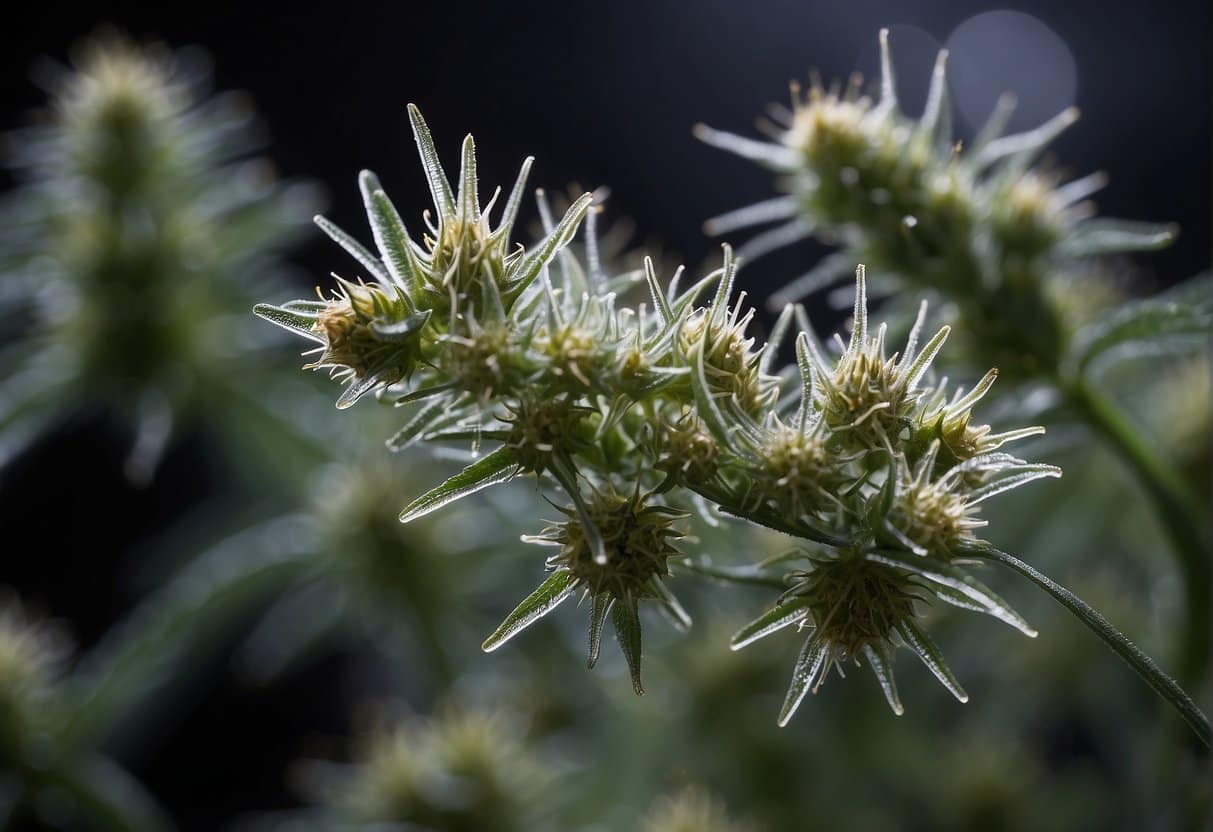
THCa, or tetrahydrocannabinolic acid, has captured attention for its potential in influencing various biological processes through interactions with your body’s endocannabinoid system and specific receptors. Its neuroprotective and anti-inflammatory properties suggest that THCa could be a valuable compound for therapeutic use.
Interaction with Endocannabinoid System
The endocannabinoid system (ECS) is a complex cell-signaling system in your body, identified in the early 1990s by researchers exploring THC, a well-known compound in cannabis. THCa, a non-psychoactive precursor to THC, interacts with the ECS, which plays a role in regulating a plethora of physiological processes, including pain sensation, mood, and immune system function. By acting on the ECS, THCa may harness its anti-inflammatory properties, although it does not produce the psychoactive effects typically associated with THC.
Receptor Activation
Cannabinoid receptors, primarily CB1 and CB2, are a part of the ECS and are found throughout your body, with a high concentration in the brain. Research suggests that THCa may interact with these receptors, particularly:
- CB1 receptors: Located mainly in your brain, these receptors influence neurotransmitter release and may modulate the neuroprotective effects of cannabinoids. Δ9‐Tetrahydrocannabinolic acid has been shown to alleviate conditions such as collagen-induced arthritis, implicating the role of CB1 receptors.
- PPARγ: Apart from the well-known cannabinoid receptors, THCa also acts on other receptor types, such as PPARγ, a receptor that regulates gene expression and plays a significant role in lipid uptake and glucose metabolism. THCa has been observed as a potent PPARγ agonist, leading to neuroprotective activity and potential benefits in metabolic diseases.
Through these interactions, THCa may offer neuroprotective and anti-inflammatory benefits, potentially making it useful in the treatment and management of a broad range of conditions.
Health Benefits and Therapeutic Uses
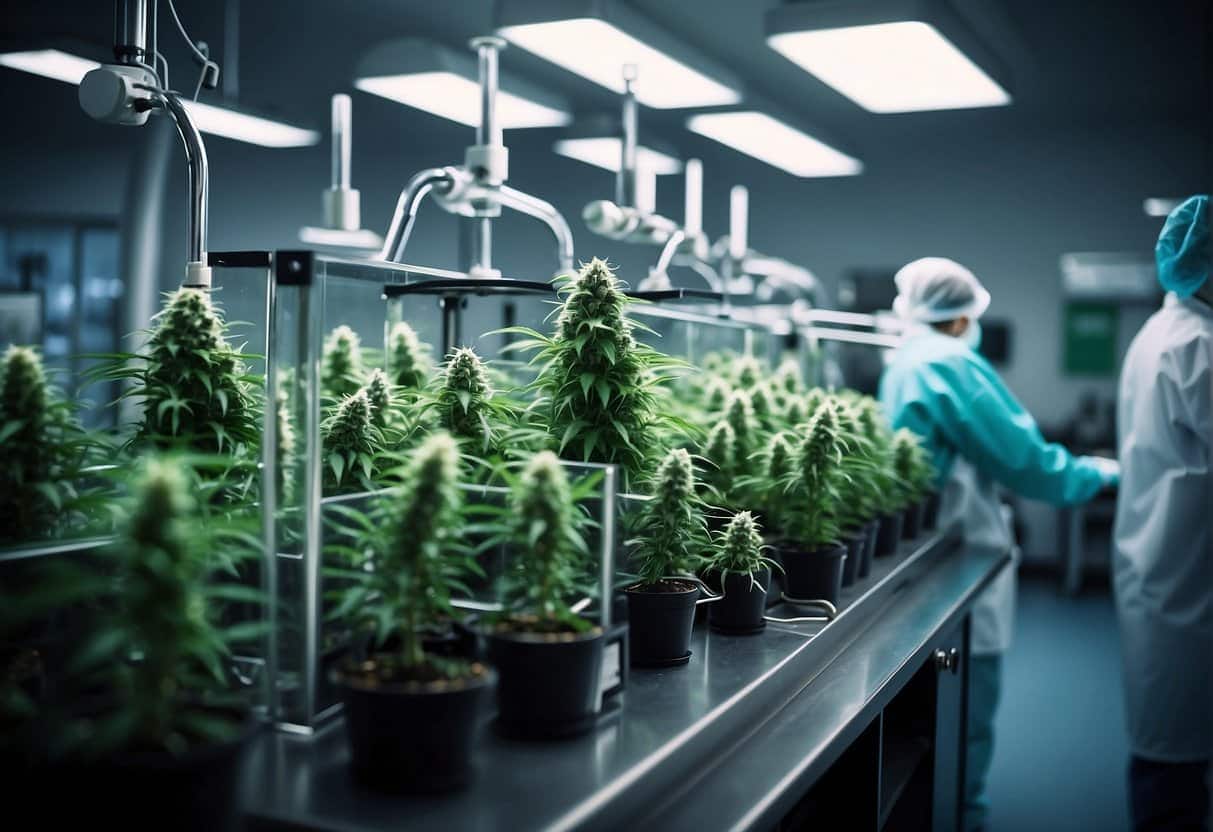
THCa, or tetrahydrocannabinolic acid A, is a non-psychoactive compound found in raw and live cannabis. As the precursor to THC, THCa has its own distinctive health benefits and therapeutic uses that are garnering interest in the medical community. Below, we delve into the specific areas where THCa is showing promise.
Neuroprotective and Anti-Inflammatory Effects
THCa exhibits neuroprotective properties that may benefit your brain health. Research suggests that it has potential in protecting brain cells from degenerative diseases. Furthermore, its anti-inflammatory effects are particularly noteworthy; you might find it helpful in reducing inflammation associated with conditions like multiple sclerosis. Studies, like the one published in Frontiers in Integrative Neuroscience, discuss the prospects of cannabinoids like THCa in neurological therapeutics.
Appetite Stimulation and Nausea Control
If you’re struggling with a lack of appetite or experiencing nausea, THCa might offer some relief. It’s believed to possess appetite-stimulating properties without the psychoactive effects that THC induces. THCa also serves as an antiemetic, meaning it can help control vomiting and nausea, which is especially advantageous for those undergoing chemotherapy.clinically relevant findings on the therapeutic benefits of THCa in these areas are encouraging. For instance, the antiemetic potential of THCa may be inferred from the research shared in journals like the British Journal of Pharmacology, highlighting cannabis synergy and phytocannabinoid-terpenoid entourage effects.
Consumption Methods
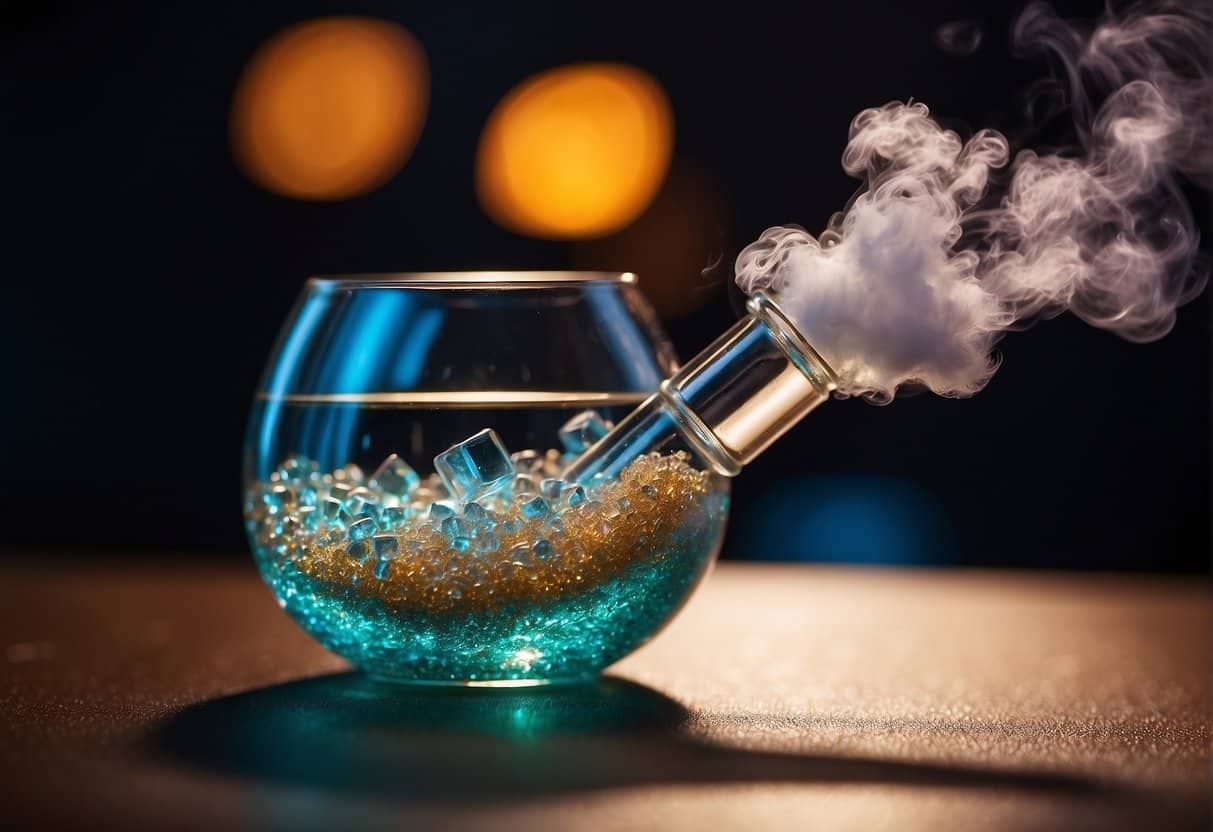
Navigating the landscape of THCa (tetrahydrocannabinolic acid A) consumption methods allows you to choose how you interact with this non-psychoactive cannabinoid. From raw plant material to refined products, each method delivers THCa in a unique form that caters to your preferences and needs.
Ingesting Raw Cannabis
Ingesting raw cannabis is a straightforward way to consume THCa, as the compound is found in its natural acidic form in the fresh plant. You can incorporate raw cannabis leaves or flowers into your diet by adding them to salads, smoothies, or other meals. This method does not convert THCa into THC, thus keeping its non-intoxicating properties intact.
Juicing, Edibles, and Oils
Juicing: Creating a juice from fresh cannabis leaves and buds provides a nutrient-rich beverage loaded with THCa and other cannabinoids.
Edibles and Oils: THCa is also available in the form of edibles and oils. Manufacturers create tinctures by infusing oils with the raw plant extract. While edibles traditionally contain activated THC, THCa-specific products are also available and offer the benefits of THCa without psychoactive effects.
Vaporizing and Dabbing
Vaporizing: Unlike smoking, vaporizing raw flower at low temperatures can preserve THCa’s properties without converting it entirely to THC. This method requires a precision vaporizer that allows temperature control.
Dabbing: For more concentrated forms, dabbing THCa crystals at the right temperature can deliver a potent dose without significant conversion to THC. However, it’s important to note that dabbing at high temperatures can convert THCa to THC, thereby inducing psychoactivity.
Legal Status and Testing
When considering THCa, you need to understand its legal status, which differs significantly from THC, and how it affects drug testing protocols and implications for individuals.
THCa vs THC Legality
Tetrahydrocannabinolic acid (THCa) is a non-psychoactive cannabinoid found in raw and live cannabis. As the precursor to tetrahydrocannabinol (THC), the substance that causes the “high” in marijuana, THCa does not share the same legal status as its counterpart. In regions where cannabis is legal, THCa might be considered legal due to its non-intoxicating effects. However, at the federal level, cannabis remains a controlled substance, and by extension, so can THCa under the Federal Analogue Act, if intended for human consumption.
Drug Tests and Implications
Drug tests typically search for THC—specifically, its metabolite THC-COOH—due to its psychoactive properties. While THCa is not targeted by standard drug tests, it can be converted into THC through decarboxylation, a process that may occur inadvertently during handling or testing. This conversion has major implications for you if you are subject to workplace drug tests, as legal consumption of THCa-rich products could inadvertently lead to a positive result for THC. Understanding the nuances between these compounds is crucial for navigating their legality and potential impacts on drug testing.
Cannabis Cultivation and Potency
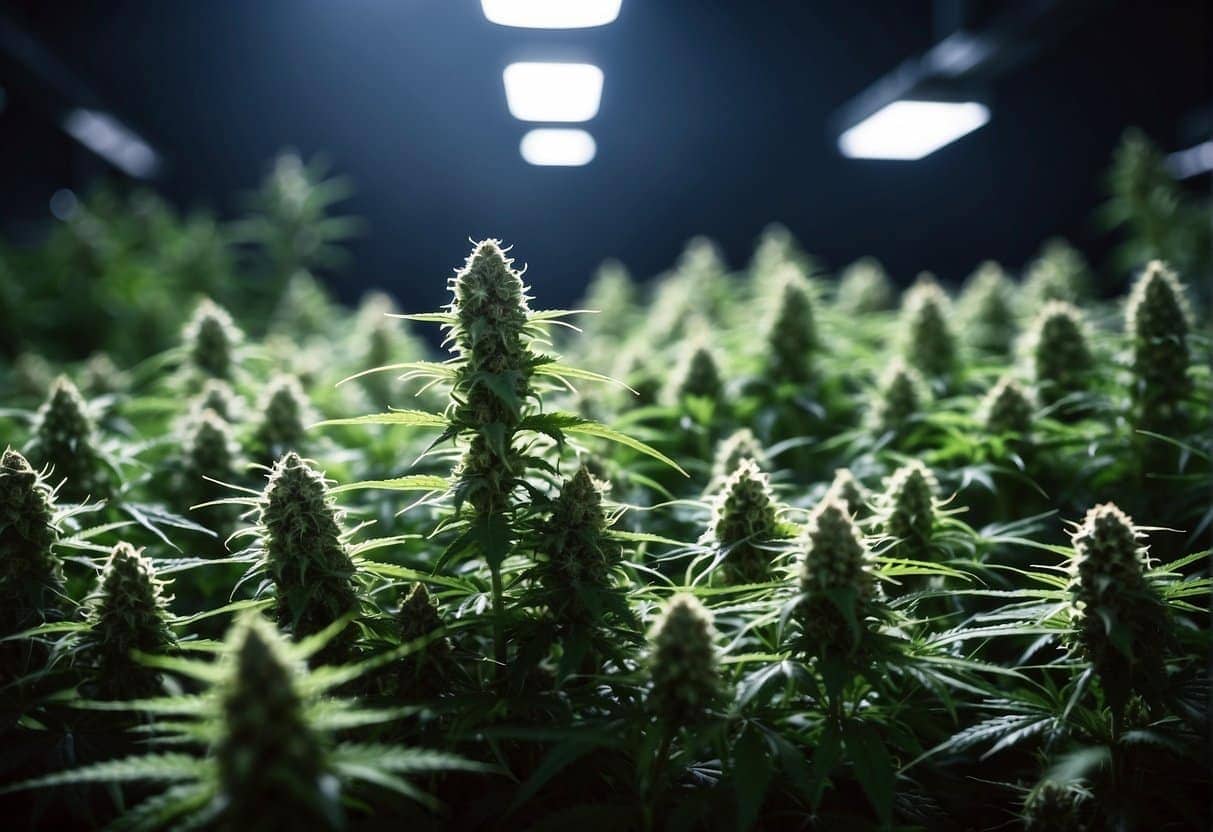
In the realm of cannabis cultivation, two key factors are at the forefront: the breeding for high THCa content and the means by which the potency of cannabis products is assessed. This section will guide you through understanding these critical aspects, which significantly influence the quality and effects of cannabis.
Breeding for High THCa Content
When you are considering the potency of cannabis plants, it is essential to understand that THCa, or tetrahydrocannabinolic acid, is the non-psychoactive precursor to THC. Breeders have been increasingly focusing on cultivating cannabis strains with elevated levels of THCa, as this compound is converted into the psychoactive THC upon heating through a process known as decarboxylation. High-THCa strains are often preferred in both medicinal and recreational markets due to their potent effects. Hemp, by contrast, is bred to contain low levels of THCa.
Assessing Potency in Cannabis Products
To determine the potency of a cannabis product, whether it’s weed, extracts like diamonds, or other forms of consumption, cannabinoid profiling is a critical step. This process quantifies the levels of cannabinoids, such as THCa and THC, providing a clear picture of the product’s strength. Recent advancements in cannabis and cannabinoid research have paved the way for more accurate and comprehensive testing methods, giving you a reliable measure of potency before consumption. It is these cannabinoid profiles that inform your experience and expectations when engaging with cannabis products.
Additional Considerations
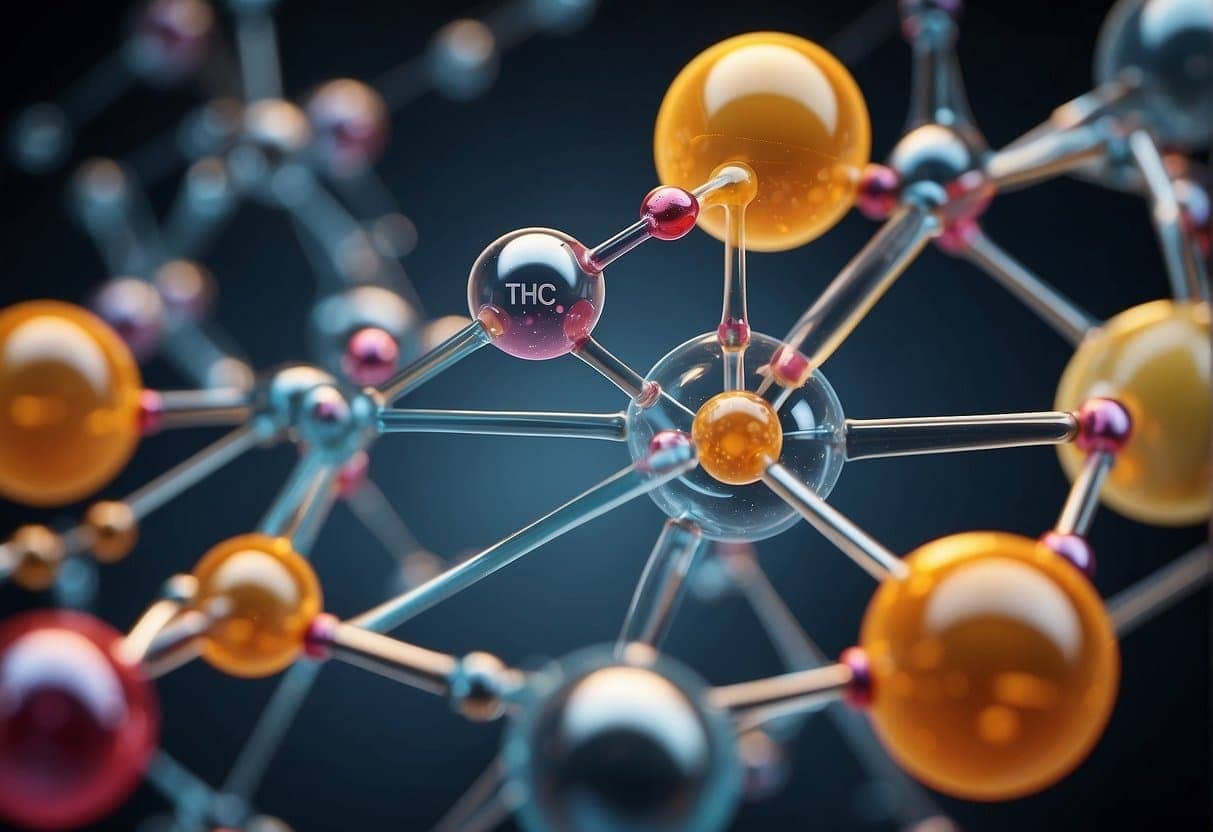
As you explore tetrahydrocannabinolic acid (THCa), it’s important for you to be aware of its potential side effects and how it interacts with other compounds in cannabis. Understanding these aspects can help you have a more informed perspective about THCa.
Potential Side Effects
THCa, while not psychoactive itself, may have side effects when it converts to THC, the active form that affects your brain. Although research is limited, some individuals report experiencing dry mouth and anxiety, which are common side effects of THC. Less commonly, there can be instances of vomiting after consuming cannabis, which may contain THCa.
Entourage Effect in Cannabis
The entourage effect is a concept noted in the British Journal of Pharmacology stating that cannabis compounds work together to create unique effects and benefits. This suggests that THCa might contribute to the overall therapeutic outcome when combined with other cannabinoids. Essentially, the presence of THCa, along with other compounds like THC, CBD, and terpenes, may enhance or modulate the effects of each other, leading to a more pronounced therapeutic or psychoactive response.
Keep these factors in mind as you consider the role of THCa in cannabis products and their effects.
Frequently Asked Questions
When exploring THCa, it’s important to address common inquiries to understand its effects, legal considerations, and differences from other cannabis compounds.
What are the potential side effects of consuming THCa?
THCa is a non-intoxicating cannabinoid found in raw and live cannabis. While research is still ongoing, consuming THCa may lead to side effects similar to other cannabinoids, such as dry mouth or dizziness, although these are generally associated with the decarboxylated form, THC.
How does the legal status of THCa differ from other cannabinoids?
The legal status of THCa is complex and varies by jurisdiction. THCa is not scheduled by the UN Convention on Psychotropic Substances, but it might be considered illegal in places where THC is banned because it is a direct precursor to THC.
What distinguishes THCa diamonds from other cannabis concentrates?
THCa diamonds refer to a highly pure and potent form of THCa that has been isolated from the cannabis plant. Unlike other concentrates which contain a mix of cannabinoids and terpenes, THCa diamonds are prized for their purity and high concentrations of THCa.
Can THCa have psychoactive effects on its own?
Unlike THC, THCa is not psychoactive and does not produce the “high” commonly associated with cannabis. THCa must be decarboxylated, typically through heat, to convert it into the psychoactive compound THC.
How does THCa influence cognitive functions and the brain?
Current research suggests that THCa may have neuroprotective properties. However, because THCa does not possess psychoactive properties, it does not influence cognitive functions in the way THC does, which is known to affect memory, perception, and motor skills.
In what ways does THCa compare to Delta-9-THC in terms of potency and effects?
In terms of chemical structure, THCa is the acidic precursor to Delta-9-THC and has different properties. THCa is non-psychoactive and doesn’t impart the potent effects of Delta-9-THC, which is the compound responsible for the euphoric and intoxicating effects of cannabis.

